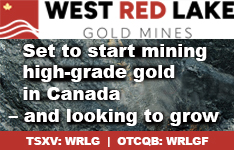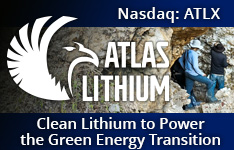The Energy Report: U.S. oil prices hit their third peak of 2012 soon after your last interview with us, then bottomed around $85 per barrel ($85/bbl) in early November. Now they're back in the mid-$90s. What's causing the recent strength?
Elliott Gue: New pipeline capacity is alleviating some of the supply crude glut in places like Cushing, Oklahoma. As a result, West Texas Intermediate (WTI) has gained ground against Brent, which is now trading just under $114/bbl and has been in that same $107–115/bbl range since August. Over the next year or so, a number of other pipelines will open up to the Gulf Coast, which will help narrow the spread between Brent and WTI.
TER: Will the increased oil supply at the Gulf refineries be good for gasoline prices?
EG: Gasoline and diesel prices have historically tracked Brent prices more closely than WTI because not all refiners have access to WTI or the other inland crude oil benchmarks. Refiners don't really benefit from rising oil prices because they purchase crude oil as a raw material. But those U.S. refiners that are able to access WTI and other inland crude oil benchmarks can buy that raw material very cheaply and sell gasoline and diesel at very high prices, earning a very high spread, or what we call a crack spread.
But the boom in U.S. energy production is benefiting the U.S. economy in general. Natural gas prices in the U.S. can be as much as one-fifth of what they are in Europe. That is sparking a renaissance in manufacturing and other energy-intensive businesses. One of the most obvious examples is the petrochemical processing business. The boom in gas production has seen a commensurate boom in production of ethane and propane. Now it's actually cheaper to produce base chemicals and many plastics in the U.S. than it is even in the Middle East, which is a dramatic change from just five or 10 years ago.
I wrote recently in High-Yield International about LyondellBasell Industries NV (LYB:NYSE), a multinational chemical company that produces a lot of ethylene and propylene. It's really benefiting because of its access to really cheap propane and ethane in the U.S. That trend is going to continue.
TER: Do you expect general improvement in the global economy to continue fueling higher oil prices?
EG: The near-term outlook appears much more bullish in Europe than the U.S. Countries in southern Europe have made strides toward fiscal austerity, bringing their budgets somewhat under control. It appears that the worst of the European fiscal crisis is behind us.
China, however, has been a drag on the global economy over the last couple of years. Its very strong growth rates caused the government to get concerned about inflation and hike bank reserve requirements to cool overheated areas of the market, like property. As a result, the Chinese economy slowed down throughout the latter half of 2011 and into 2012. I believe it's reached a bottom now. The government is now supporting growth by cutting interest and bank reserve requirements and doing additional fiscal spending. Over the last 10 years, more than 95% of global growth in oil demand has come from emerging markets, not the U.S. and Europe, so Chinese growth is very important to global oil demand.
In December, Japan, the world's third-largest economy, elected Shinzo Abe on a platform of aggressive stimulus for the Japanese economy. He wants it to adopt an official inflation target and start pushing the Japanese economy into an inflationary position to get out of the stagnation and periodic bouts of deflation it has suffered from since its property bubble burst back in the early 1990s. That will probably be positive for commodity prices.
TER: How do these projections affect your investment outlook?
EG: I'm really excited about international markets now because I think that's the best place to be. A company like Eni S.p.A. (E:NYSE), which was originally a state-sponsored Italian oil company, is far cheaper than a Chevron Corp. (CVX:NYSE) or an Exxon Mobil Corp. (XOM:NYSE), and has faster production growth. It yields almost 6% compared to 2–3% for the U.S. majors, yet it's getting punished simply because it's an Italian company even though its main product, oil and natural gas, are internationally traded commodities that are priced in dollars. Moreover, it doesn't have that much exposure to Italy or even Europe. Many of its main oil- and gas-producing facilities are located in regions like North Africa, the Middle East and Norway. Markets like Europe are much cheaper than the U.S. As European economies emerge from recession, stocks should do very well.
East Africa is one of the very interesting emerging offshore regions, and Eni is one of the main players in Mozambique. Eni is a company that has been a favorite of mine for a while. I actually think now is an even better time to get involved in it because Europe is really going to start pulling its weight.
TER: What are you expecting for oil prices in the foreseeable future?
EG: My oil outlook is pretty flat this year. I'm calling for Brent prices to average around $110/bbl, and WTI to range between $90–100/bbl. Of course, there are risks. One of the biggest risks for Brent is the geopolitical climate. Recent events in Algeria have raised concerns over potential disruption to global oil supplies. Another factor is simply that the global supply of oil is actually very tight. All of the world's growth outside of OPEC has come from the U.S. and Canada in recent years, as well as the deepwater Gulf of Mexico.
The main risk to U.S. oil prices is that if drilling activity remains very strong, we could see U.S. oil production ramp up more quickly than expected. That would likely put downside pressure on WTI. But unless WTI prices remain relatively high, there will be a drop-off in drilling activity and a consequent drop in supply.
TER: What does that mean for energy stocks?
EG: It's actually going to be a really good year for companies, particularly those leveraged to Brent. One of my favorite areas remains deepwater, due to the activity boom in different basins such as the U.S. Gulf of Mexico. One of my favorite deepwater rig plays that I've had for a while is Seadrill Ltd. (SDRL:NYSE), which has about an 8% yield. This company owns a fleet of deepwater and ultra-deepwater rigs that are going to be in extremely high demand. The market is very tight and should remain so for at least three or four years. There are only one or two rigs available for all of 2013. Operators are willing to lock in those rigs at very high rates. Seadrill is a company that's well placed to benefit from a very modern fleet. Seadrill has been a good winner for us. It's pulled back a little bit from its highs lately, but has continued to benefit from the ability to purchase new rigs and put them out at very high contracted day rates. As a result, it has been able to continue to grow its dividends, which have supported the stock.
TER: How have some of your favorites performed over the last year or so?
Some of the companies that I've talked about in the past, such as some of the U.S. royalty trusts, like the SandRidge Permian Trust (PER:NYSE) and SandRidge Mississippian Trust II (SDR:NYSE), have been on a roller-coaster ride, the main reason being that most of those trusts are producing WTI oil where prices are much lower. But new pipeline capacity coming into play is really going to help those stocks. In particular, the SandRidge Permian Trust remains an excellent buy at current prices.
We also talked about liquefied natural gas (LNG) during my last interview. This is an area where I continue to see substantial upside potential. Natural gas prices in the U.S. are ultra low, which is a major advantage for the U.S. If you're a gas producer, it's not a good thing. In Europe and Asia, people are paying prices five times higher for natural gas. A lot of these countries are going to be importing larger and larger quantities of LNG. This market will continue to grow in coming years.
One of the companies I like a lot is called Teekay LNG Partners L.P. (TGP:NYSE). It's a master limited partnership (MLP) incorporated in Bermuda. It owns is a fleet of LNG tankers. Teekay LNG locks in day rates over multi-year contracts, guaranteeing a steady cash flow and nice high, single-digit distributions. We'll see continued growth as it adds new ships to its fleet to work under long-term contracts at very favorable rates.
TER: What's your outlook for the international majors?
EG: In the integrated oil space, I would tend to favor the foreign over the U.S. majors. The problem with the global majors is they really don't generate a lot of production growth. A company like Exxon Mobil has a huge production base, but if that base declines at a 5% annualized rate due to maturing fields, for example, it has to make up for that basic decline and then come up with enough new projects to produce growth. In this sense, majors are running on a treadmill.
The investment case for Exxon Mobil rests more on the idea that it does pay a dividend and it generates tons of free cash flow. It has been high grading its portfolio, selling off lower-quality and more mature assets and buying into faster-growing, better-quality or lower-cost assets. Over the years, it has built one of the best portfolios of projects in the world.
Overall, I still tend to prefer the European majors right now. I've already discussed Eni, which has a number of very exciting exploration projects. Another company I would mention is the French oil company Total S.A. (TOT:NYSE). It also has strong production growth prospects, particularly in the deepwater areas like the Gulf of Mexico. And it has a much higher dividend than what you're going to get out of a similar U.S. company.
Royal Dutch Shell Plc (RDS.A:NYSE; RDS.B:NYSE) is definitely an interesting company for the longer term. Shell is really excelling in the LNG area, which over the long term is going to provide considerable growth. In addition to that, it generates solid free cash flow. I see very little chance that its dividend would be threatened. In fact, I'd expect to see continued dividend growth even in the event that oil prices were to dip more than I expect. It's certainly a solid company that's performed well over the years with some nice exposure to LNG.
TER: Where do you see the best opportunities in energy stocks in the coming years?
EG: It's definitely going to be a good time to invest in energy stocks. One of the key levers this year is going to be further strengthening in the Chinese economy, which is going to reignite demand. Oil prices within the U.S. are going to have to remain high for producers to continue to generate the production growth we've seen in recent years. That's really an amazing transition from a culture of energy scarcity to a culture of abundance.
In terms of more speculative names, one growth area that I would look at within North America is among some of these smaller Canadian firms, many of which used to be Canadian royalty trusts. These were once extremely hot because they paid out very high dividends, and were extremely tax advantaged. In 2006, the Canadian government announced that it was going to change the tax structure for these trusts and eliminate a lot of their advantages. Although many of these companies don't pay out quite as much as they did before that tax change, many are still yielding 7, 8 or 9%. That's still pretty impressive. If I'm right about the narrowing in the discount for WTI and other inland crudes to Brent crude oil prices, the market could see a lot of upside.
One company in Canada I've written about recently is Twin Butte Energy (TBE:TSX), which is primarily an oil producer in western Canada. I believe it's going to continue to see pretty strong production growth using horizontal drilling and fracturing-type techniques. It has traded off since November on the idea that the oil that it sells tends to be indexed to Western Canadian Select (WCS), which is a benchmark crude that has been trading at a large discount to WTI and Brent, although that discount is also starting to narrow due to new pipeline capacity. This company could really see some upside over the next couple of years and while you wait, you're getting about a 7%+ dividend yield.
Another Canadian that's a little bit less speculative, which I recently profiled in High-Yield International, is Enbridge Income Fund Holdings (ENF:TSX). It owns, and is expanding, pipelines that transport oil out of western Canada and the Canadian portion of the Bakken shale. I like pipeline companies because they get paid a fixed rate for the volume of oil that they transport, regardless of the oil price. It's a very stable business and Enbridge pays around a 5% dividend. I do see some growth because as it adds capacity to these pipelines, it is signing up new producers to use that capacity, guaranteeing additional cash flow. While Twin Butte is definitely more of an aggressive play, Enbridge Income Fund provides a little bit more safety and is still going to benefit from this production growth.
TER: Thanks for joining us today. We really appreciate your updates and ideas.
EG: Thanks for having me.
Elliott Gue of StreetAuthority is an energy and stocks analyst with particular expertise in the international markets. The stock market strategist has appeared on CNBC and Bloomberg TV, and has been quoted in Barron's, Forbes and the Washington Post. Elliott's expertise and track record of success have also made him a sought-after speaker at investing conferences hosted by the American Association of Individual Investors and others.
Want to read more exclusive Energy Report interviews like this? Sign up for our free e-newsletter, and you'll learn when new articles have been published. To see a list of recent interviews with industry analysts and commentators, visit our Exclusive Interviews page.
DISCLOSURE:
1) Zig Lambo of The Energy Report conducted this interview. He personally and/or his family own shares of the following companies mentioned in this interview: None.
2) The following companies mentioned in the interview are sponsors of The Energy Report: Royal Dutch Shell Plc. Interviews are edited for clarity.
3) Elliott Gue: I personally and/or my family own shares of the following companies mentioned in this interview: Seadrill Ltd., Eni SpA Roma, Royal Dutch Shell Plc., Teekay LNG Partners LP, Schlumberger Ltd. and Exxon Mobil Corp. I personally and/or my family am paid by the following companies mentioned in this interview: None. I was not paid by Streetwise Reports for participating in this interview.










































